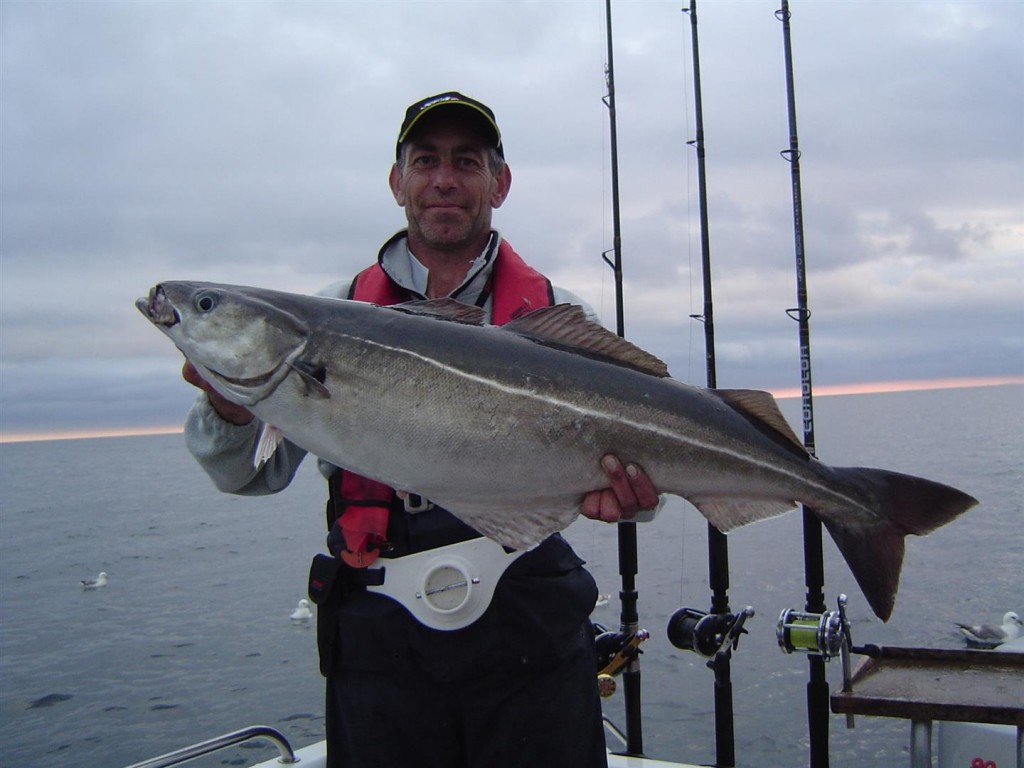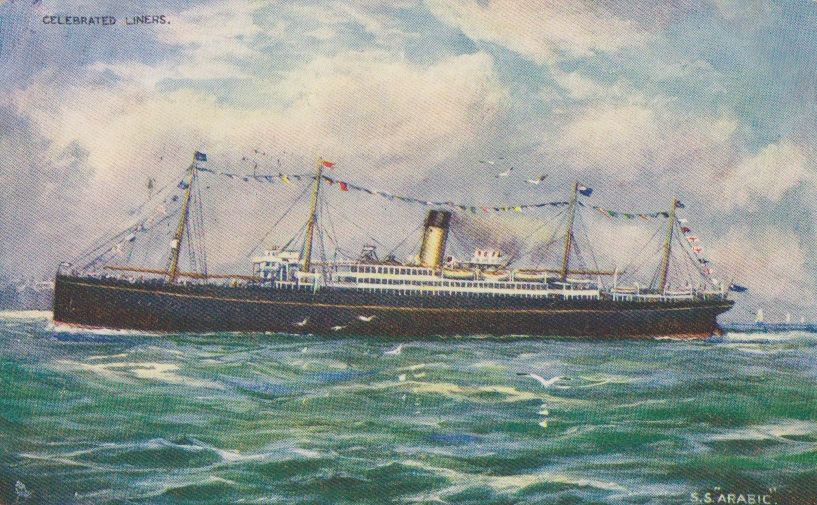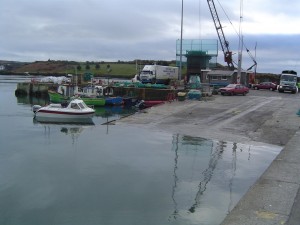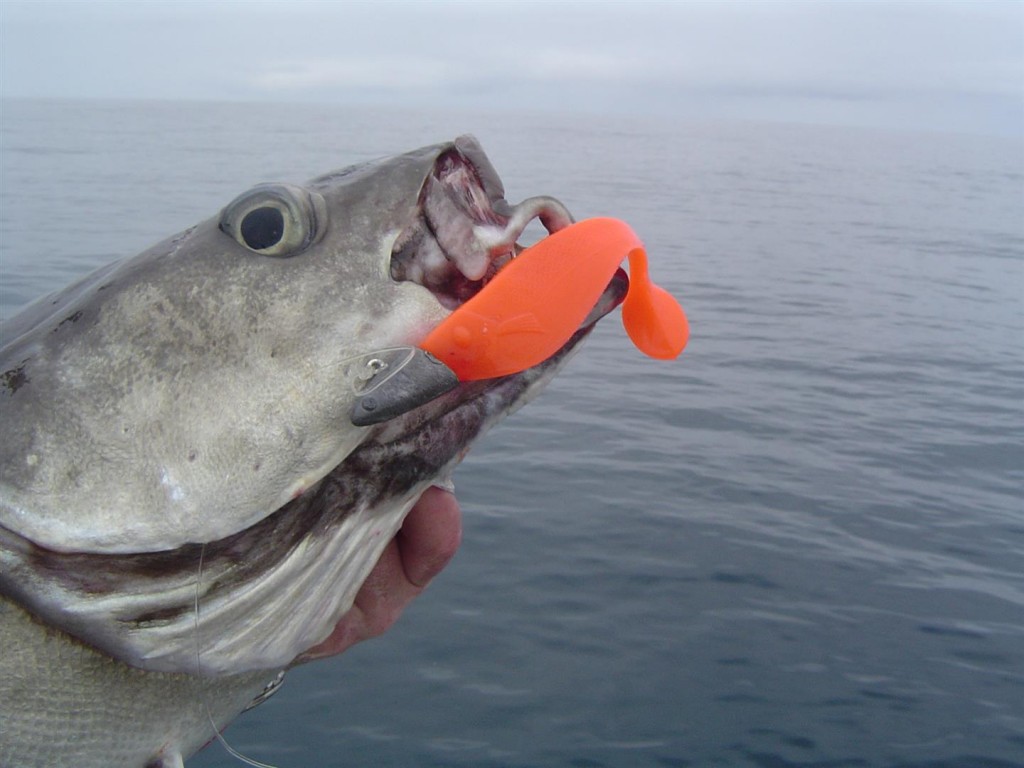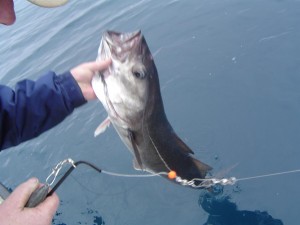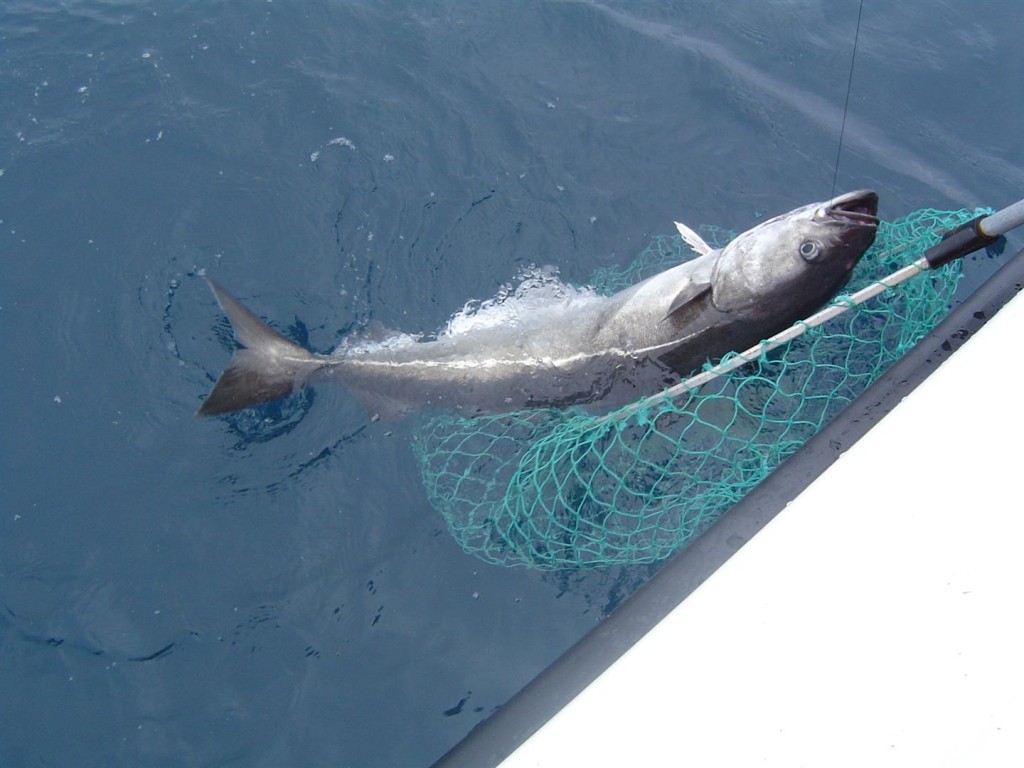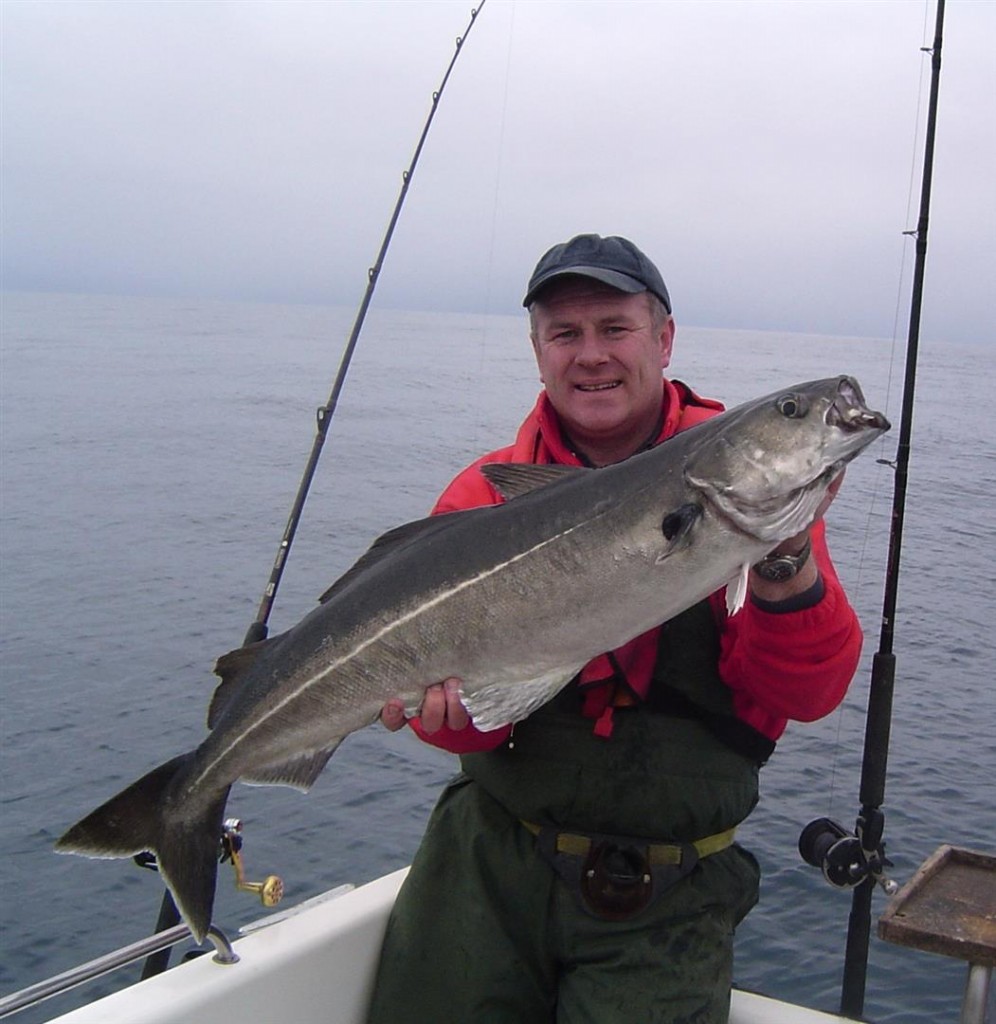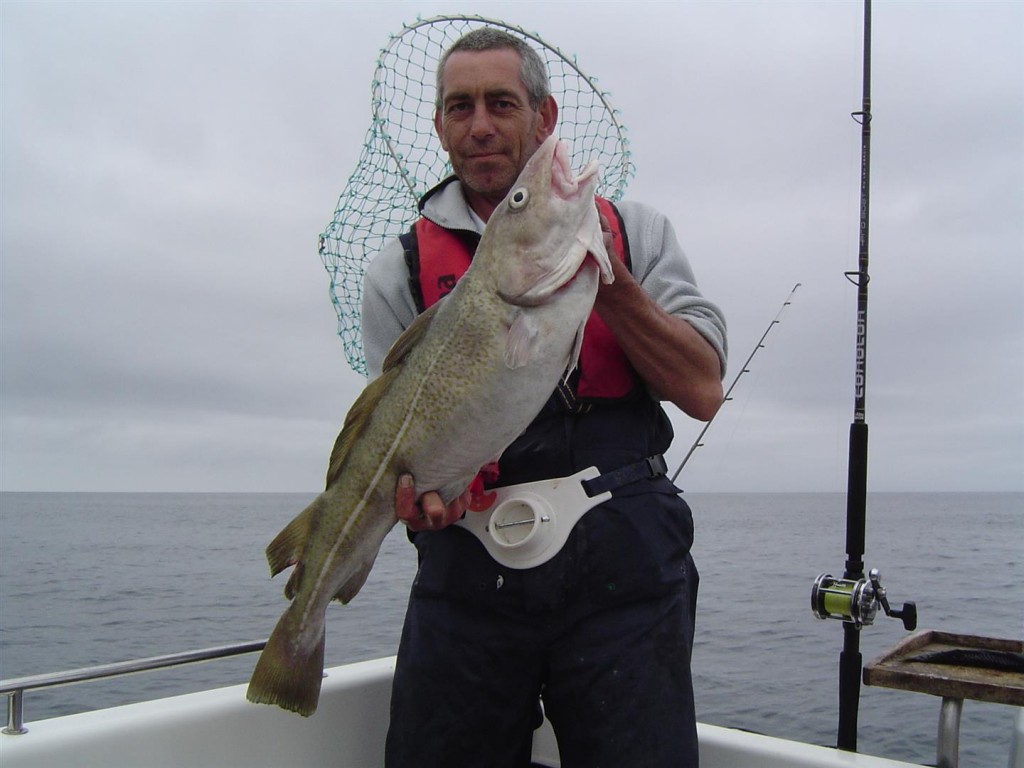Back in the early 2000's there was superb fishing on some of our offshore reefs. In those days there were few small boats pushing offshore to great distance to target the big coalfish and cod....
The towable dinghy allows the angler to bring the boat to where the fish are. Jim Clohessy tows SKUA to the famous town of Kinsale, Co. Cork in search of Coalfish on offshore wrecks.
Wreck Fishing Rubber
On the 6th of May 1915 the “White Star” liner “Arabic” was under way from New York to Liverpool. While off the coast of Cork she was sited by the U-Boat U-20. The skipper, Walter Schwiger, began to target the liner. Fog obscured his target and U-20 aborted the attack. Unawares, “Arabic” continued her journey. U-20 continued her patrol, on the 7th of May she encountered a large liner off the Old Head of Kinsale. She engaged and sank the “Luisitania”. The “Arabic” continued to ply her trade across the Atlantic as usual. On the 19th of August 1915 while outward bound from Liverpool she was spotted, engaged and sunk by U-24, again off the Old Head of Kinsale.
These two are but two of the numerous ships that were lost off the Cork coast during the First World War. The legacy of these events is a coastline dotted with wrecks. Wrecks, the boat angler’s Mecca.
Wreck fishing is no longer the preserve of the highly equipped charter boat. For the last number of years small boat anglers have targeted offshore wrecks. The advent of inexpensive electronic equipment and high performance small boats has opened the seas to the independent angler.
The location.
Kinsale has been a famous sea-angling base for years. Kinsale is well served with numerous well-maintained slipways. The main slipway is located near the commercial berth at the western end of the town. Launching is a dream at all stages of the tide. Parking can be a problem during the summer months. It is advisable to get away early in order to beat the tourist traffic.
The Plan.
An early start is a must on a beautiful summers morning. The tow to Kinsale is an easy one. The roads are in fairly good condition. We arrive at Kinsale at 0730. The sun is shining the water is calm; altogether things do not get much better, more perfect. Having filled with petrol and loaded a spare 25litre tank as a reserve we leave the slipway and head for the Old Head. The object of the day is to fish some of the offshore wrecks well beyond the Old Head. The quarry? Coalfish and Cod and anything else that may fall victim to that wonder of modern lures: The shad.
Rubber & Latex Wonders.
The last few years has seen an explosion of shads and jelly worms in the marketplace. They come in a huge variation of sizes, colours and patterns. Now even the different forms of plastic used is amazing. Today we carry an impressive assortment. Standard soft rubber shads in various colours and sizes, Latex shads in luminous and Day-Glo colours, twin tails and lead heads, the trace wallets resemble a kid’s toy box! These we will mount simply to a ledger trace and drift fish wrecks imparting as much lifelike action as we can to our piece of rubber.
We are wreck fishing. Depths will be up to 300 feet. Tackle must be up to the job without being too heavy. We use 12-30lb class rods mated to a good quality reel such as a Shimano Calcutta 700 or Penn 535. It goes without saying reels are loaded with braid.
The Business End.
The trace is a simple ledger of 100 mono through a good quality heavy boom. The line is heavy as it helps avoid tangles. We now get to that thorny issue: How long should the trace be? Forget about the long gilling traces of ten feet or more, three feet is perfect. Longer traces tend to tangle on the way down or during the retrieve and drop. I have tried traces down to a foot and all worked and caught fish. Three feet is manageable and imparts good action to the shad. If fishing a normal shad a lead head is advisable. Many shads such as the Storm variety come with a lead head built in. Swivels should be at least a 2/0, a 4/0 is comforting when Coalfish are about. Leads depend on the speed of drift and the depth though it is seldom that a lead of over 12oz is used.
Outward Bound.
While the spin out is long it is exhilarating, dolphins abound, as do whales and foreign trawlers. We stop for bait, bait? I hear you say, what about shadding? This is for insurance. There are days that the shad does not produce and to be without bait this far out would be a crime! Mackerel are easy prey and fall to shrimp rigs. The bait is stowed away from the sun, if needed it will be in good condition. The Warrior is a dry boat. The hull design sends spray out and away from the boat. We reach our first stop. We motor around making sure our coordinates are good and the wreck is lying in the position recorded. The first drift is experimental to gauge the strength and direction of drift and also time to study the fish finder for tell tale blips high above the wreck: Coalfish.
The Quarry.
The Coalfish, (Coley, Saithe or Black Pollack) is a common fish around the Irish Coastline. Mostly anglers encounter the fish while fishing for Pollack or night fishing from beaches. Anglers do not prize smaller fish. The specimen weight is 15lb. This is a fair weight for most areas around the country, however some of the wrecks off the West Cork coast hold coalfish to huge proportions. The current Irish record stands at 15.1kg (33.28Lb). The record was set in 2003 and will probably be broken again. Norwegian anglers catch fish of over 40lb regularly. The coalfish is a shoaling fish. Bigger specimens tend to inhabit offshore wrecks where they cruise the higher water feeding on baitfish. The coalfish is a tremendous fighter. When hooked the fish will dive at an alarming rate in order to take cover in the wreck. A big fish will dive three or four times before coming to the net. Generally when taken from depths of over 200 feet they cannot be returned alive.
The Fishing.
The drift is brisk. Both wind and tide have an effect. Our plotter shows us our current line and allows us to correct our position in order to fish each area of the wreck. We tackle up. I begin with a 6-inch lumi-pink shad. A weight of 12oz is deemed necessary in order to maintain contact with the bottom. The sense of anticipation while dropping down 300ft is super. At such depths it would be difficult to fish with mono. The low stretch qualities of braid enable us to feel the bottom easily. As soon as I feel the lead touch the bottom I begin to reel. The retrieve is very important when shadding. A brisk pace that would seem ridiculous to the angler used to gilling is necessary, counting turns all the while. I get fifteen turns off the bottom when I get a take. Not a Coalfish but the tell tale nodding of a Cod. The fish gives a good account of itself and five minutes later a nice fish of about 10lb goes into the hold. The drift is over. The sounder shows a clean bottom below so we motor back up the trail on the plotter and begin again. This time I retrieve even faster in order to put some distance between my shad and the bottom. Thirty turns, forty turns if fishing for Cod I would be dropping back down at this stage. Sixty turns, a pluck, keep reeling do not stop…. Sixty-five turns, wham a take like none before, a big coalie. There is little striking involved with shadding. The fish will hook itself with its first lunge to the safety of the wreck. Still I lift the rod into the fish and what happens next is the stuff of legends:
The fish makes a mad dash to the wreck below. Nothing prepares you for this first run. The sheer power is amazing. The delicate balance between the fish making the wreck and the angler winning the battle begins. Start by tightening the drag a little, you must make the fish work for every inch of braid. I tighten down, the fish still runs, I tighten down more, the fish still runs, I eventually have my Calcutta tightened to the last and the fish is still taking line! Before the fish makes the wreck I manage to get a few turns on the reel. The fish slows so I can pump the fish clear of the steel. I have now got seventy turns back on the reel. At this stage it is imperative to relax the drag again. At seventy-five turns it all begins again. Legs like jelly, knees shaking this is sport fishing at its best! The fish runs. Tighten the drag and let the rod do the work. After four lunges the fight eases and progress is made to the surface. It is imperative to leave the rod do the work at this stage. There must be steady pressure applied to the fish, any slack and it’s cheerio to your Coalie. After ten blistering minutes the fish comes to the side of the boat and is netted. An exceptional fish of over twenty pounds, this is the fish of a lifetime. Despite aching arms and weak legs all you’ll want to do is get back down for another go, it’s addictive.
The specimen must be kept for weighing. Despite a poor reputation large coalfish make excellent eating. Big fish will seldom survive the passage from the depths; in fact other than Conger and cod few fish will survive being hauled from 300 feet. We continue fishing, Ling, more Cod and seven Coalfish over fifteen pounds fill the Skua’s hold. We actually stop fishing for Coalies as it would be both selfish and pointless to continue hauling these majestic fish to their end. We have enough for the table and we have filled our I.S.F.C. quota.
It can be easy not to catch a Coalfish: don’t retrieve as high. Eventually we have to leave and begin the long steam home. Weary, but wearing that satisfied smile we head for land. The trip is uneventful. We trailer SKUA and begin to fillet fish. We distribute some of our fish to the throng of tourists at the slip. It is good to give some fresh fish away. It gives people an appreciation of our sport and there is that feel good factor that comes with seeing a land lubber going away delighted with a free lunch. We nominate a bystander to verify weights and measurements taking contact details so the I.S.F.C. can contact the witness for verification if necessary. We head for the Trident Hotel, which is located near the slipway. It is possible to keep an eye on the boat while discussing the trip, planning the next one and sipping a tasty beverage! It doesn’t get much better!
Shadding at a glance:
- Short trace.
- Fast retrieve.
- As little lead as possible.
- Vary the size, type and colour.
- Don’t stop reeling when you feel the “pluck”.
- Quality reel with a good drag.
- Flexible Rod.
- Wear a butt pad.
- Bring Bait as well.

(This Piece originally was featured in Irish Angler Magazine in 2004)

